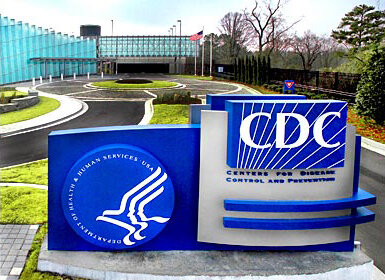Mayo Clinic Research Shows Stem Cells May Treat Paralysis
/By A. Rahman Ford, PNN Columnist
In a case report recently published in Mayo Clinic Proceedings, a 53-year-old California man paralyzed from the neck down in a surfing accident experienced dramatic improvement after an injection of his own stem cells.
Chris Barr can walk again and has shown other improvements in his motor and sensory functions. His case is significant, because currently there is no FDA-approved therapy that can reverse the devastating life-changing effects of paralysis from spinal cord injuries.
Barr’s inspiring story can be seen in this video produced by the Mayo Clinic:
Barr was one of 10 paralyzed adults enrolled in a Phase I clinical trial that looked at the safety, side effects and ideal dose of stem cells. Early findings show that patient response varied. Mayo researchers call Barr a “superresponder” because his treatment was so successful.
"In this case report, the first patient was a superresponder, but there are other patients in the trial who are moderate responders and nonresponders," says first author Mohamad Bydon, MD, a Mayo Clinic neurologic surgeon. "One of our objectives in this study and future studies is to better delineate who will be a responder and why patients respond differently to stem cell injections.”
According to the National Spinal Cord Injury Statistical Center, about 288,000 Americans currently suffer from a spinal cord injury (SCI). Over 17,000 Americans suffer SCI’s each year, costing the health care system over $40 billion annually. The estimated lifetime cost for each patient can range from the hundreds of thousands into the millions of dollars, and their life expectancy rates fall far below those without SCI.
Chronic pain is a serious problem that can result from SCI, affecting about two-thirds of patients, with one out of three reporting their pain as severe. With the inherent limitations of medical interventions such as surgery, medication and physical rehabilitation, new strategies are needed to improve functional outcomes and quality of life.
Although stem cells have successfully been used to treat inflammatory conditions that affect the spinal cord, such as arachnoiditis, published reports on their safety and effectiveness in treating SCI‘s are scant.
Animal studies have demonstrated effectiveness in treating SCI with embryonic stem cells and human neural stem cells. Mesenchymal stem cells (MSC’s) derived from bone marrow have also been successfully used to treat SCI in rats, as have human umbilical cord-derived stem cells. And adipose stem cells derived from fat have been used to improve functional recovery in dogs with SCI.
Barr’s Impressive Results
After being paralyzed in the surfing accident, Chris Barr’s condition initially improved after a posterior cervical decompression and fusion. However, that improvement plateaued after six months. Barr had complete loss of motor function below the site of his injury, including bowel and bladder sensation.
Barr enrolled in the Mayo study nine months after his injury. His stem cells were collected by taking a small amount of fat from his abdomen. Over eight weeks, the cells were grown in the laboratory to 100 million cells. Those MSC cells were then injected into Barr’s lower back, 11 months after his injury.
The results from the therapy were impressive and long lasting. Eighteen months after stem cell injection, Barr’s total upper extremity motor score increased from 35 to 44. There was also considerable improvement in his total lower extremity motor scores, from 36 to 49. Improvement in sensory scores was likewise remarkable.
Barr reported significant improvement in his quality of life, as well as mental and physical health. He was able to walk further, faster and for a longer period of time. His range of motion for shoulder flexion and shoulder abduction also improved.
“Given the multidimensional complexity of SCI, cell-based therapies have offered substantial promise as a therapeutic strategy because of the multifactorial roles that stem cells can potentially provide,” Bydon wrote.
Bydon and his colleagues caution in generalizing from Barr’s remarkable results, although there is cause for optimism. The Mayo team plans to continue analyzing patient responses, and further results will be published on the other nine trial participants.
A. Rahman Ford, PhD, is a lawyer and research professional. He is a graduate of Rutgers University and the Howard University School of Law, where he served as Editor-in-Chief of the Howard Law Journal.
Rahman lives with chronic inflammation in his digestive tract and is unable to eat solid food. He has received stem cell treatment in China.
This column is not intended as medical advice and represent the author’s opinions alone. It does not inherently express or reflect the views, opinions and/or positions of Pain News Network.






































